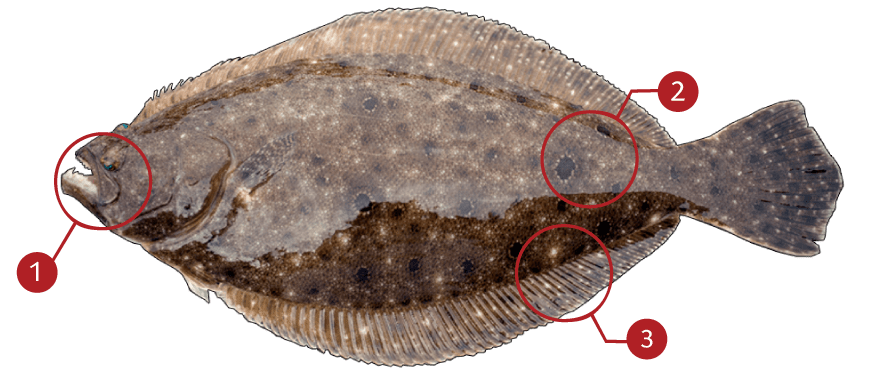FLOUNDER
How to identify a Flounder
The summer flounder is a left-eyed flatfish. The eye side always blends in perfectly with the sea bed. There is usually a scattering of 10 to 14 eye-like spots on the body. As in other flatfish, the blind side is white and relatively featureless. The teeth are well developed on both sides of the jaws. The dorsal fin has 85-94 rays; the anal fin has 60-63 rays. There are only 5 or 6 gill rakers on the upper limb of the first arch and 11-21 on the lower limb.
Where to catch Flounder
Occurs in the western Atlantic from Maine to South Carolina and possibly to northeast Florida. It may be found in water as shallow as 6 in. (15 cm) during the summer, though the largest specimens are found in the depths of 8 to 10 fathoms. In the winter the large fish move offshore into depths of 25 to 80 fathoms.Adults are largely piscivorous and highly predatory, feeding actively in midwater as well as on the bottom. They are often seen chasing bait fish at the surface. It prefers sandy or muddy bottoms and is common in the summer months in bays, harbors, estuaries, canals, creeks, and along shorelines as well as in the vicinity of piers and bridges.
IDENTIFICATION

| | Typically a scattering of 10 to 14 eye-like spots on the body |
| | Anal fin has from 60 to 73 rays |
| | The margin of its caudal is rounded |
TARGET AREAS
|
|
Acknowledgements: We thank TAKEMEFISHING.org (www.takemefishing.org), Wisconsin Department of Natural Resources, Indiana Department of Natural Resources for their contributions to these FISH FACTS.

